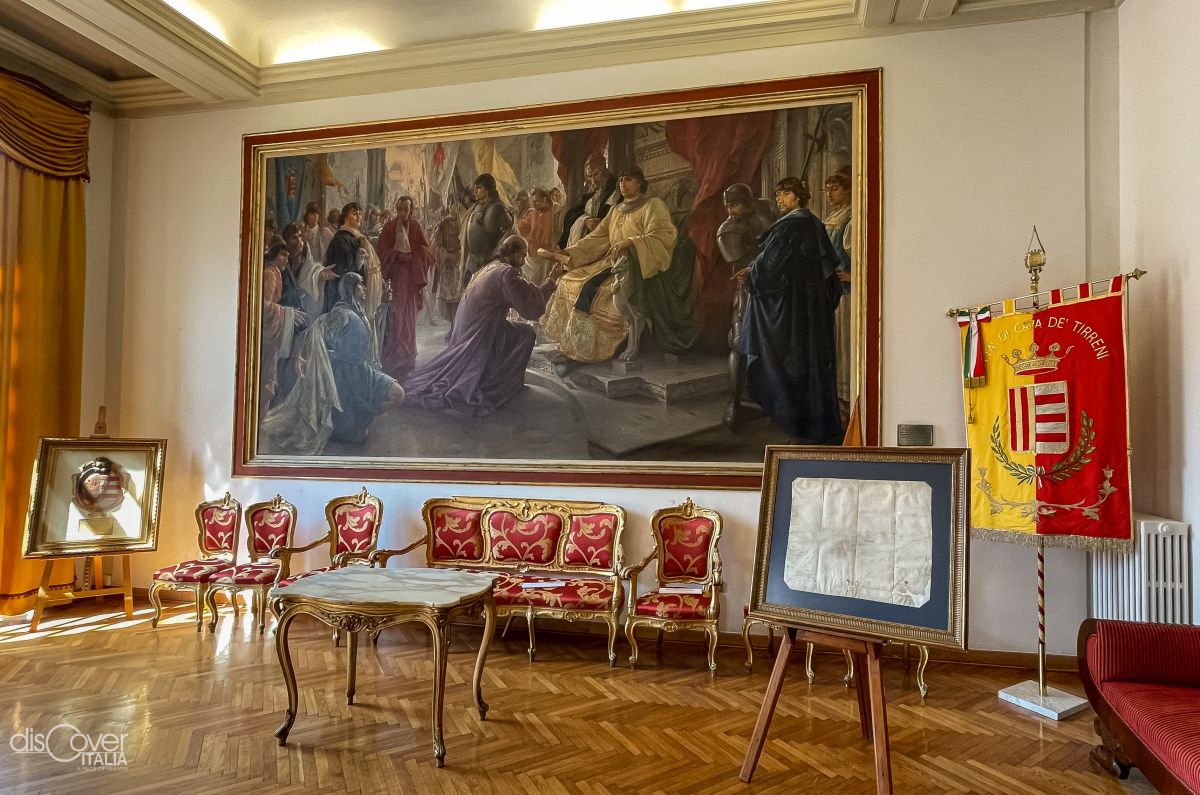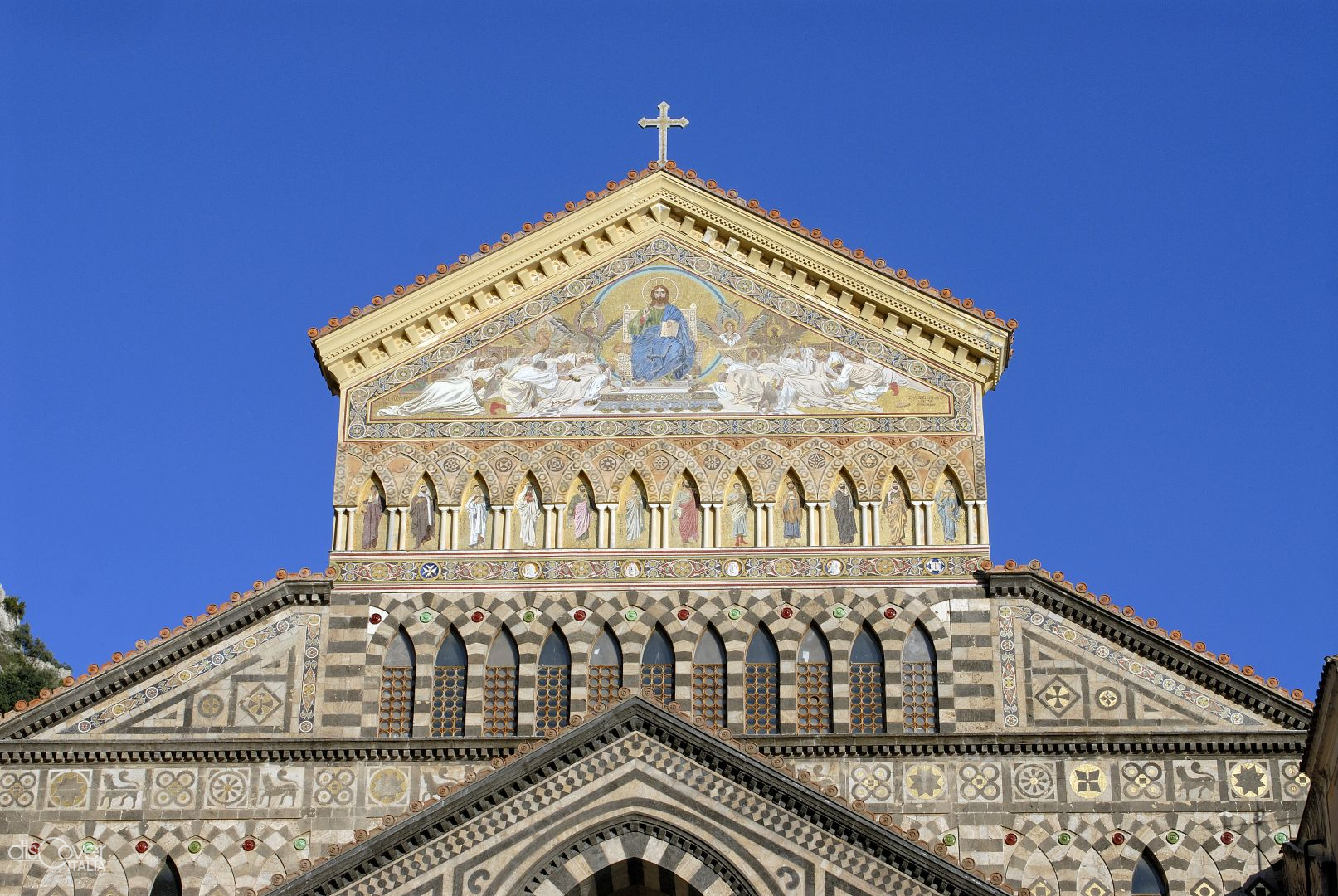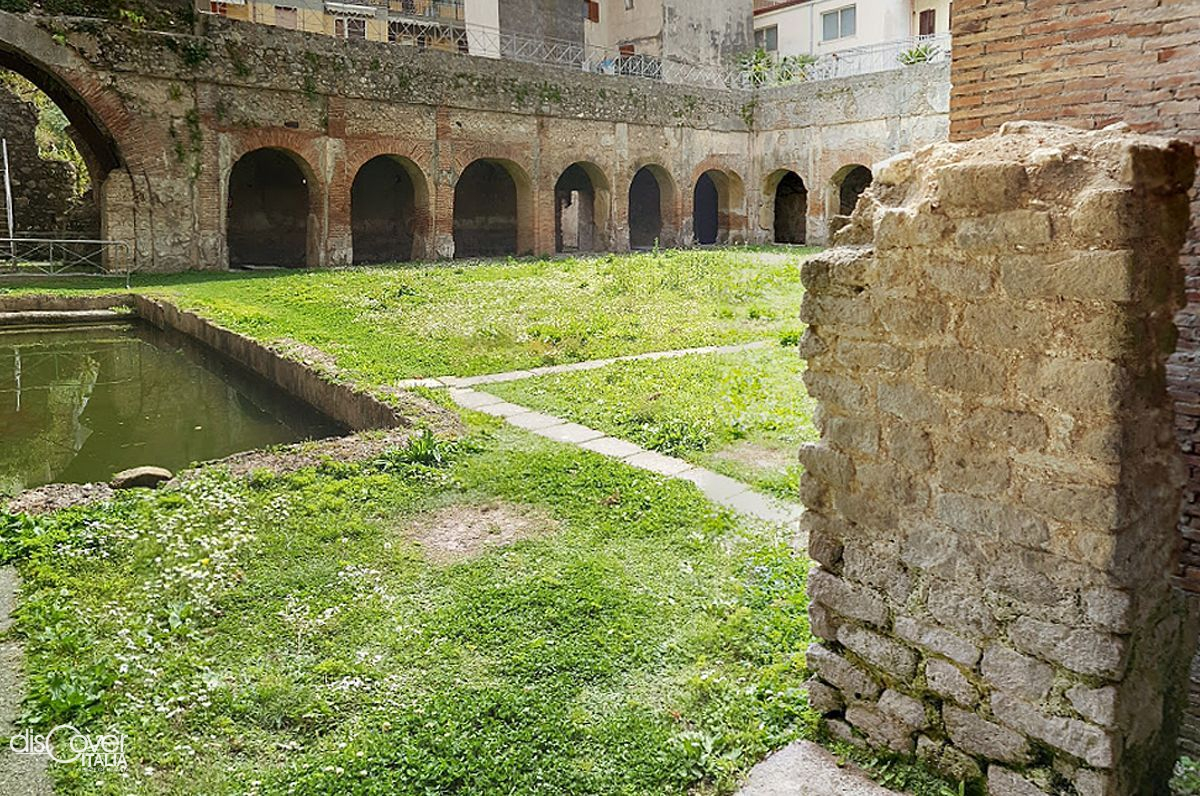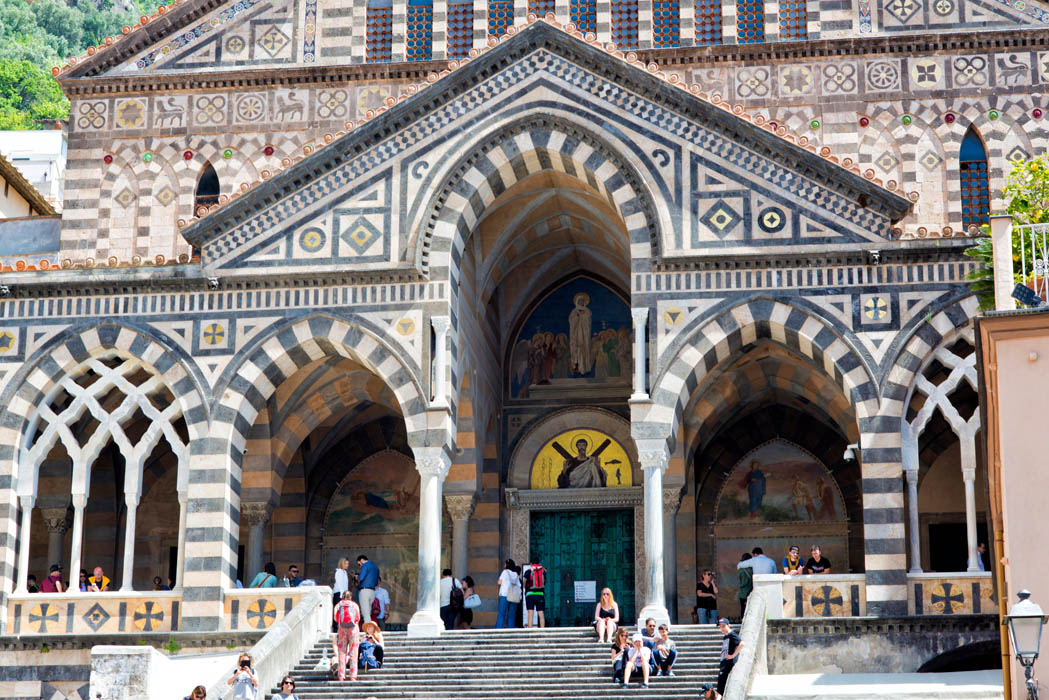An amphiteatre of houses with characteristic Mediterranean colours
 Between the green of the Lattari Mountains overlooking it and the blue of the sea in which it is reflected. Right there in front, the legendary islands of the Sirens are exhibited, in other words the Li Galli archipelago. It fascinated like the song of the mythical guardians of that stretch of sea, Positano, which has challenged for centuries the dizzying heights of the coast with its villages, perched on the overhanging rocks and connected by thousands of steps and narrow streets adorned with lemon gardens and cascades of flowers of the terraces. A place that noble Romans appreciated, where they had built in imperial times maritime villas in the bay on the mainland and on the neighbouring island of Gallo Lungo. With its magnificent vividly colored frescoes, the villa of Positano preserves the only example of Roman paintings on the Coast. Covered by the volcanic materials of the eruption of Vesuvius, its underground part, which lies eight meters deep under the oratory of the church of Santa Maria Assunta, has been only recently excavated and with the tolls and the furniture found, it became the location of the Roman Archaeological Museum of Santa Maria Assunta, open to the public all year round.
Between the green of the Lattari Mountains overlooking it and the blue of the sea in which it is reflected. Right there in front, the legendary islands of the Sirens are exhibited, in other words the Li Galli archipelago. It fascinated like the song of the mythical guardians of that stretch of sea, Positano, which has challenged for centuries the dizzying heights of the coast with its villages, perched on the overhanging rocks and connected by thousands of steps and narrow streets adorned with lemon gardens and cascades of flowers of the terraces. A place that noble Romans appreciated, where they had built in imperial times maritime villas in the bay on the mainland and on the neighbouring island of Gallo Lungo. With its magnificent vividly colored frescoes, the villa of Positano preserves the only example of Roman paintings on the Coast. Covered by the volcanic materials of the eruption of Vesuvius, its underground part, which lies eight meters deep under the oratory of the church of Santa Maria Assunta, has been only recently excavated and with the tolls and the furniture found, it became the location of the Roman Archaeological Museum of Santa Maria Assunta, open to the public all year round.
In the 10th century, the Benedectines had founded an abbey, around which the original nucleus of the village was developed on the sea. And its port, the first on the coast west of Amalfi, had a strategic role in the flourishing commercial economy of the Maritime Republic. After being sacked by the Pisans in 1268, the inhabitants started to build new houses on the rocky spur near the seaside village. And the rise, for defensive reasons, continued in the following centuries, when the raids of the Barbary pirates became more frequent and devastating. The stairways climbing up from the sea and the alleys which climbed up to the new settlements could be more easily defended and offered a escape route also to the inhabitants of the village by the sea, warned on time by the numerous towers since the Angevin time and then strengthened and multiplied by the Aragonese: Torre della Sponda, the oldest one, Torre Trasita of viceroyal time, the contemporary Torre Fornillo, which from a rocky spur dominates the beach of the same name and Torre di Renzo, near to beach of Arienzo, purchased in 1915 by the Russian writer Semënov.
When the alarm signals started from the watchtowers, the inhabitants took refuge on the hill overlooking the bay, where there are the hamlets of Montepertuso “the Pierced Mountain”, which takes its name from the characteristic pierced mountain according to the legend of the Virgin Mary, and Nocelle, arrival point of the Path of the Gods (Sentiero degli Dei) and connected by 1500 steps to the beach of Arienzo. In Nocelle, the highest cluster of houses in the village is in the parish church of Santa Maria delle Grazie also known as Chiesa Nuova, with a particular elliptical shape and a domed roof, which keeps also a rare maiolica pavement with plant motifs from the eighteenth century Baroque transformation.
Still at the top there is the district of Liparlati, which Stefan Andres, the German intellectual escaped from Nazi Germany who lived there for a long time with his family, described and depicted as the “dead city” as it was for him due to the many houses left empty by emigrants. Bellina is the square from which you can enjoy a magnificent panorama, but the one that the cemetery of the village offers up to the Faraglioni of Capri is not of less importance. In that cemetery, several distinguished foreign guests are buried. Due to its position, in Lipartati super nineteenth-century villas rise in Lipartati, overlooking Via Camerelle. The church of San Giacomo is a must-see: a single with a vaulted ceiling with lunettes and a fine majolica floor. The bell tower, surmounted by an onion-shaped spire covered with colored majolica doesn’t go unnoticed.
Among the several steps descending towards the sea, on which shops and artisan shops open, in the homonymous street there is the church of San Giovanni, which is characterised by the original stucco altar, the particular frontal, the floor with the wind rose, a painting depicting the Baptism of Christ, while the sacristy houses an ancient cinerary urn.
In the seaside village, with the beautiful dome of polychromatic majolica dome visible in every corner of Positano, there is the parish church of Santa Maria Assunta, linked to the legendary arrival of the Byzantine icon of Madonna Nera, placed on the main altar, to which the etymology of the name Positano is connected. Transformed into a Baroque version in the second half of the eighteenth century, the church has a bell tower built in 1707.
Revealed to the world after the construction of the Bourbon road which connects it to other locations on the Peninsula, from the beginning of the twentieth century Positano has been elected a retreat by artists and scholars of the most varied origins and from the 60s it has become one of the favourite destinations of the international jet set. Also for its beautiful pebble beaches. The Spiaggia Grande, among the largest on the Coast, is the mot popular and trendy, easily reachable on foot. A narrow seafront passage, where Trasita Tower and Fornillo Tower meet, connects it to the more peaceful Fornillo Beach, on which the chapel of Santa Margherita opens, with a quadrangular plan and barrel vault with lunettes and a precious terracotta floor and majolica. In the small hamlet of Fornillo, the intellectual’s favourite one, there is also the church of Santa Caterina in neo-Gothic style. The cave of Fornillo is characteristic with a votive shrine and a crib, which reproduces in miniature the whole Positano. With the sea taxis, it is possible to reach the beaches in the coves along the coast: RemmeseClavel and Cavone. And the Arienzo Beach connected by a stairway to the Path of the Gods. Positano, “it is a dream place that it isn’t quite real when you are there and becomes beckoningly real after you have gone”, as John Steinbeck described it to the world in his 1953 Harper’s Bazaar.
© ALL RIGHTS RESERVED












Comments powered by CComment